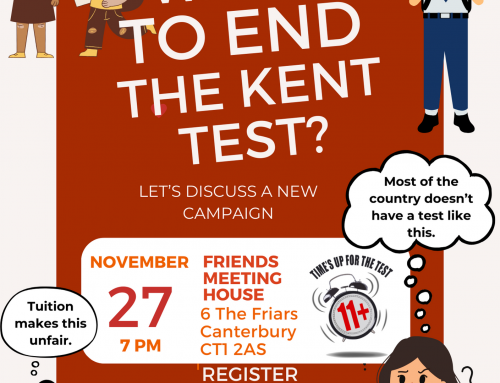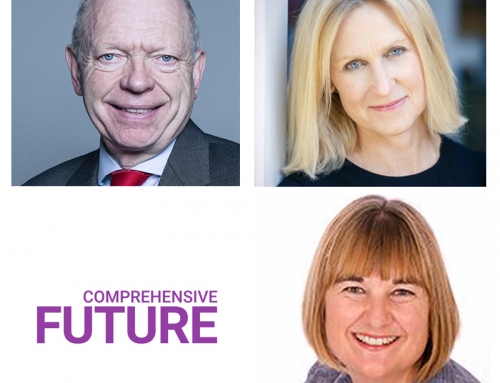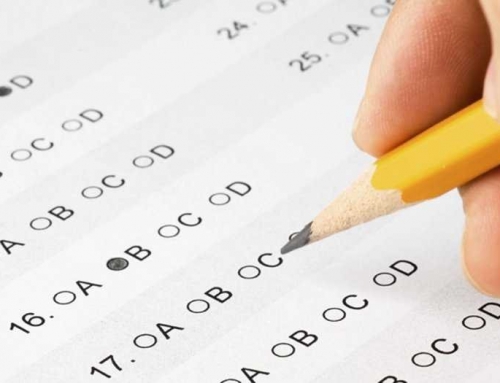Conference November 21st 2015
Part 2 the admissions quagmire
What is wrong with school admissions and how could they be improved?
Alan Parker has worked in the field of education and training for a variety of voluntary, statutory and private agencies since the 1970s. He was Education Officer at the Association of Metropolitan Authorities (1992 – 1997) and Director of Education at the London Borough of Ealing (1997- 2002) and a Schools Adjudicator 2004 – 2012
The task I was given today was to respond to the question – what you see as the main problems in the school admissions landscape and what should be done about them?
The landscape, is scarred by fundamental contradictions.
Firstly the shibboleth of “parental choice” of school is diametrically opposed to the mantra of “school autonomy”. The Admissions Code can be understood as an attempt to resolve that contradiction. The constant tinkering with its provisions suggests the task is impossible.
Secondly the ‘market’ ideology behind the idea that parental choice and school determined oversubscription criteria are drivers for systemic improvement is flawed. Because education does not, and could never come close to being, conducted in a state of what economists call “perfect competition”.
• Most parents (or indeed anybody?) lack sufficient information and expertise to judge which school will have proved best for their child – up to eight years after the point of decision;
• No one makes enough decisions to send accurate signals to the market;
• The long term and ‘inelastic’ nature of the business, means that providers cannot respond quickly enough to those ‘signals’ they do receive; and
• The social and financial consequences of school failure are far too high for the inevitable consequences of a ‘pure market’ to be politically acceptable.
“Choice”, as an abstract concept, is also greatly over-rated. Choices are good if you can make lots of them, and the consequences of making a bad one are insignificant. Choice works well with biscuits. But being forced to make a one-off high-stakes choice (particularly when you cannot be guaranteed actually to get what you ‘choose’) is a nightmare.
It is my experience that what parents invariably want is a school which is ‘good enough’, close to where they live, where their children will be happy and succeed. Often, ‘happiness’ is rated above getting better exam grades.
The identification of a “good and suitable school” is also substantially driven by social perceptions. To put it bluntly, no one wants their children to stray too far from their social comfort zone. Worries about children being bullied or drawn into bad company at school are commonplace. But it is less often acknowledged that most do not wish to “trade-up” too far socially either.
The market model of competition as a driver for systemic improvement fails most spectacularly where schools have control over admissions. Aggregated school results look so much better if pupils arrive with the social capital making them intrinsically more likely to succeed.
As to solutions:
My preference would be to devise a system in which high stakes admissions decisions were made redundant. Education up to age 14 should be based on a common curriculum. GCSE would be abolished and there would be no external high-stakes testing until 18. Access to a new 14 -19 phase, with opportunities for specialisation, would be characterised by assisted student choice within a much wider range of academic and vocational pathways.
If that is too utopian. I would argue for a genuinely comprehensive system with admissions arrangements devised and administered by independent local bodies – for the benefit of children not schools (and for that matter removing much of the unhelpful pressure on parents). Transfer at Y7 would include a guaranteed place for everyone at their local catchment comprehensive school. Ideally a tiebreaker would be unnecessary – but straightforward proximity would be the default. I would retain freedom to apply for any other school; as a necessary, and in many ways beneficial, safety valve. But allocation of ‘out-catchment’ places would be determined by random allocation (a lottery if you like).
Assuming that total abolition of faith schools would also be out of the question. An essentially similar model would be based on a separate system of catchments – or simple proximity – with simplified method of identifying genuine adherents of the relevant faith.
This would mean that local schools would tend to reflect the social mix of their area. The random access approach for those wishing to go elsewhere would preclude attempts to manipulate criteria or ‘work the system’. It would not directly prevent premium house prices in popular schools’ catchments – but neither does the current system. Arguably if, as a result, all schools were helped to improve – the pressure to escape a poor catchment school would be reduced.
Overall this approach would better meet the Admissions Code requirements that arrangements should be “simple, fair and transparent.” It would be easier to match the school estate to demographic need and consequential efficiency gains would release resources. Removing the ability of popular schools to manipulate their intake would mean the residual competition between schools would take place on a more level playing field and be more likely to stimulate improvement. There would also fewer obstacles to collaboration between schools.
All this would tend to support system level improvement.
Sadly, this isn’t going to happen any time soon. There are too many powerful vested interests protecting the flawed status quo (not to mention lobbying for the re-expansion of grammar schools).
In particular we lack political parties, whether mainstream or fringe, advocating anything like the necessary degree of change.
Jay Harman is a member of the Fair Admissions Campaign (FAC) steering group and is responsible for the day to day running of the campaign. In addition to his work on the FAC, his primary role is as the Faith Schools and Education Campaigner at the British Humanist Association.
The Fair Admissions Campaign wants all state-funded schools in England and Wales to be open equally to all children, without regard to religion or belief, and is supported by a wide coalition of individuals and national and local organisations. It’s supporters hold diverse views on whether or not the state should fund faith schools, but they all believe that faith-based discrimination in access to schools that are funded by the taxpayer is wrong in principle and a cause of religious, ethnic, and socio-economic segregation, all of which are harmful to community cohesion. Member organisations include Ekklesia, the British Muslims for Secular Democracy, the Hindu Academy, the education groups of the Green Party and Lib Dems, the Socialist Educational Association, the Runnymede Trust and ATL.
Religious selection – the context:
• 19% of secondaries and 37% of primaries are faith schools, the vast majority CofE or Catholic
• 49% of CofE secondary schools are selective to some degree, 99.8% of places at Catholic secondaries are selective
• 13% of places at all secondaries and 17% of places at all primaries are religiously selected
• 16% of all school places or 1.2 million places in total
Why is religious selection wrong – three main reasons:
• It’s discrimination. Faith schools have specific exemptions from the Equality Act to allow them to discriminate, not just in admissions but in employment too. This would not be deemed acceptable for any other public service, let alone state-funded public service – one wouldn’t expect to be turned away from a hospital, denied access to legal representation, or asked to sit at the back of a bus because of their religion.
• It segregates along religious and ethnic lines – labelling children by the religion of their parents and then dividing them on that basis emphasises their differences rather than what they have in common and leads to children going through their entire childhood without befriending or getting to know someone from a different background. This is terrible for community cohesion at a time when there’s nothing more important.
• Also segregates along socio-economic lines – there is a lot of research on this
In 2013 the FAC compared schools to their local areas on Free School Meal (FSM) eligibility. Non-religious comprehensives admit 5% more pupils eligible for FSM, selective religious schools admit 30% fewer.
The academic literature supports this. Dr Rebecca Allen has previously found that a community school located in the same neighbourhood as a VA school is likely to have around 50% more FSM children than the VA.
Religious selective schools vs Grammar schools:
• Grammar schools – How do they compare? Grammar schools on average are almost twice as socio-economically selective as religiously selective schools. However, because religiously selective schools are more numerous they make a greater contribution overall in making the state-funded school system more socio-economically segregated at the secondary level. And of course, at primary level, religiously selective schools are unrivalled in their impact on socio-economic segregation.
Together the combined impact of socio-economic segregation by religious selection at primary and secondary level is twice that caused by grammar schools.
If you care about the impact of grammar schools, you should care just as much if not more so about the impact of religiously selective schools!
Report to the Office of the Schools Adjudicator:
‘An Unholy Mess’ – in 2014/15 we submitted mass objections about the admission arrangements of a sample of religiously selective schools. Once the Adjudicator had returned all the decisions, pretty much all of them were breaching the School Admissions Code in a variety of different ways.
Some of the breaches were obviously inadvertent, some were intentional…
90% of schools were asking for information from parents that they didn’t need – including asking for applicants’ countries of origin, whether English is they’re first language, if they have any medical issues etc. Read into that what you will. A number were breaking the Equality Act in directly discriminating on the basis of race or gender.
The evidence of incredibly cynical manipulation of intakes was clear, and the fact that religiously selective schools are their own admission authorities makes this kind of abuse very easy.To an extent it doesn’t matter whether they are inadvertent or intentional, the people who lost out are the ones who are less able to navigate the complexity of the arrangements or less able to fulfil the requirements. That will always be those from lower-income groups.
Fiona Millar is a writer and journalist specialising in education and parenting issues. She writes a column in Guardian Education and regularly takes part in television and radio debates about education policy. Fiona is co-founder of the Local Schools Network website and is a governor of two North London schools.. She is Vice Chair of Comprehensive Future.
I have been writing and campaigning on admissions issues since 2003, when I make a film about school choice for Channel Four. The film looked at private schools, the grammars, faith and at the comprehensive schools that often ended up taking in pupils others didn’t want to teach. In many ways the hierarchy of schools is worse now, exacerbated by continuing emphasis on parent choice, school accountability measures like league tables and more schools that are their own admissions authorities. We shouldn’t underestimate the impact too of selection by house purchase and of lying , cheating and fraudulent behaviour by some parents.
My experience of campaigning with Melissa Benn around the time of the Labour 2006 Education and Inspections Act taught me that we need a critical mass of politicians to take an interest and support us in her quest to get fairer admission. There hasn’t been such an obvious moment since then, which makes the politics of getting change are harder. In 2006 lobbying succeeded in improving the Education and Inspections Act and the School Admissions Code. We have gone backwards since then and have not had a similar opportunity to bring about change. This is in spite of the fact that many parents express concern about the admissions arrangements in their local areas especially where there are a lot of schools with different and sometimes selective criteria.
However at the moment, because of changes to exams, curriculum and accountability measure, we are in a period where it may become increasingly difficult for some schools to demonstrate improvement if they have a skewed or particularly challenging intake. Some schools seem to be doomed to fail and this may force some reflection on how the admissions system works.
Obviously parental choice can never operate fully but it can work more fairly and there are reforms to the Code of Practice, to the OSA and to local oversight of admissions that would make the system better.
The system needs to be policed more proactively. The adjudicator can only respond to complaints. There also needs to be a local forum, encouragement for schools to work to share information about their intakes and an obligation at a local level to try and seek balanced intakes as far as possible.
An even more radical solution might be to require schools to take in a certain proportion of children eligible for FSM ( broadly in line with the local community?) before they can be judged outstanding.
Rebecca Allen is Director of Education Datalab, on leave from her academic position as Reader in Economics of Education at UCL Institute of Education. She is an expert in the analysis of large scale administrative and survey datasets, including the National Pupil Database and School Workforce Census. Her research interests include school accountability, measuring performance, pupil admissions and teacher labour markets.
Education Datalab has been researching inequity in access via casual admissions. 1-in-5 school admissions takes place at a non-standard time, across each year group, ranging from 8.4% of admissions in year 1 to 1.3% in year 11. Children with special educational needs or eligible for free school meals are far more likely to be admitted at a non standard time. Reasons for admission at a non standard time include first registration, moving house, switching school or returning to school after a long absence.
Older teenagers are more difficult to place. A pupil schools receive in year 10 counts as much in performance tables as a pupil received in year 7: but they are more likely to be lower achieving. They may not have covered same curriculum or exam specifications and the school has less time to influence their achievement.
The 2012 Code of Practice took the administration of in year admissions from local authorities. There is now a lighter touch ‘self-regulating’ regime. Schools that are their own admission authorities can take responsibility for their own in-year admissions. This leads to complexity – where to go to find a place and concerns – will the school treat them fairly? Will the school tell them their rights (e.g. for appeal). There has been a relaxation of Fair Access Protocols. These are critical for in-year admissions. Since this only happens after the long process of applying to multiple schools, any child subject to the Fair Access Protocol is likely to have been out of school for some time.
There is now no statutory role for admission forums. These would have a role in ensuring in-year admissions are dealt with equitably.
The outcomes for children are affected. 63% of stayers (ie children who are in the same school from yr 7 to yr 11) get 5 A* to C including English and Maths whereas only 44% of those joining during their time at secondary school achieve that and only 25% of those leaving school at non standard times. The final destinations of leavers affect outcomes. Which destination is reach also varies with disadvantage. For example only 2% of students leaving to go to alternative provision get 5 A* to C including English and Maths and of those leaving to be transferred to alternative provision 78% are ‘ever eligible’ for free school meals.
The future is uncertain. How might this look in future with more studio schools and UTCs? Will enterprising secondaries open their own studio schools for non-EBACC pupils?
Points from discussion
• There seems to be more hysteria than there was about school choice. Is this because of lack of provision and increasing numbers of faith schools? Also it is because there are more schools able to choose their intakes.
• Guaranteeing a place at a local school with the option of entering a lottery for a place outside the area could be a solution.
• We must address the hierarchy of schools.
• Local authorities must be strengthened, their ability to advise parents has been hugely undermined.




